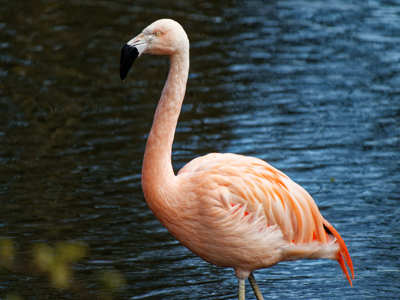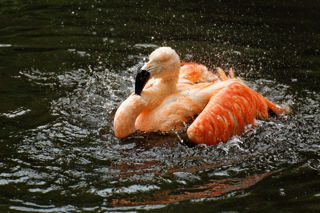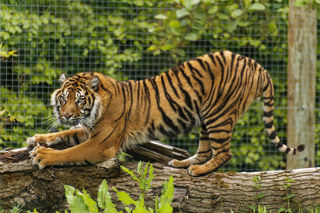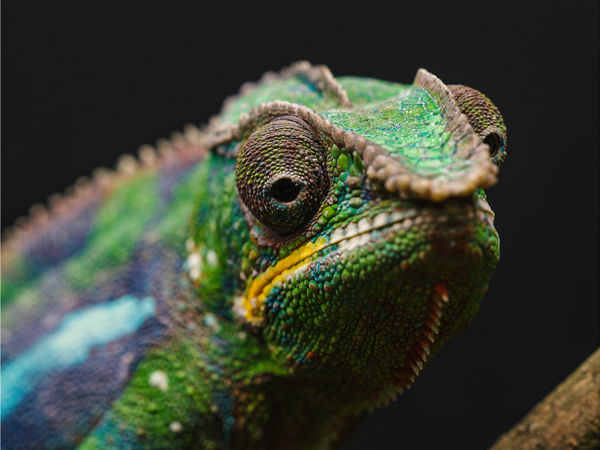
Chilean flamingo
The Chilean flamingo is one of the larger species of flamingo. They are closely related to the Greater and Caribbean flamingoes. Juvenile flamingoes are a dull grey-white when hatched, over the next couple of years they will gain their bright pink adult plumage. They have long pink legs and a uniquely designed bill specially adapted to filter feed.

Chilean flamingoes communicate through a variety of sounds similar to geese with loud honking, grunting, howling calls and low conversational gabbling. The ritualised displays of exaggerated preening, stretching and paired head movements indicate when they are ready to mate and a pair will stay together for life. Parental responsibility is shared, with the male and female taking turns to look after the chick for the first five to eight days of life. The chick is transferred to an adult supervised crèche, which can be up to 30,000 young birds in the wild.

These flamingoes live in coastal and wetland habitats. They can be found up to 4,500m above sea level using mountain lagoons and salt lakes.
Using their special bills, Chilean flamingoes filter out brine shrimp and blue-green algae from the silt and mud to feed. Their pink coloration is due to the beta carotene in their diet that they get from the shrimp.
The Chilean flamingo is classed as Near Threatened. Threats that are decreasing population numbers are illegal egg collection, poaching and habitat loss caused by mining and tourism.
Key Facts:
Conservation Status: Near Threatened
Distribution: Argentina, Bolivia, Brazil, Chile, Paraguay, Peru, Uruguay
Habitat: Coast, Wetlands
Diet: Aquatic Insects and algae
Height: 79 – 145cm
Weight: 2.5 – 3.5kg
No. of young: 1
Life Span: 40 – 50 years

SUPPORT OUR ANIMALS
If you're looking for an alternative way to donate to Twycross Zoo, you can help support our animals and our zoo keepers by purchasing something from our Amazon Wishlist!
Updated regularly by our zoo keepers, the items on the list help to provide enrichment for our animals and keep their habitats well maintained.
Every donation helps us as a conservation charity.
